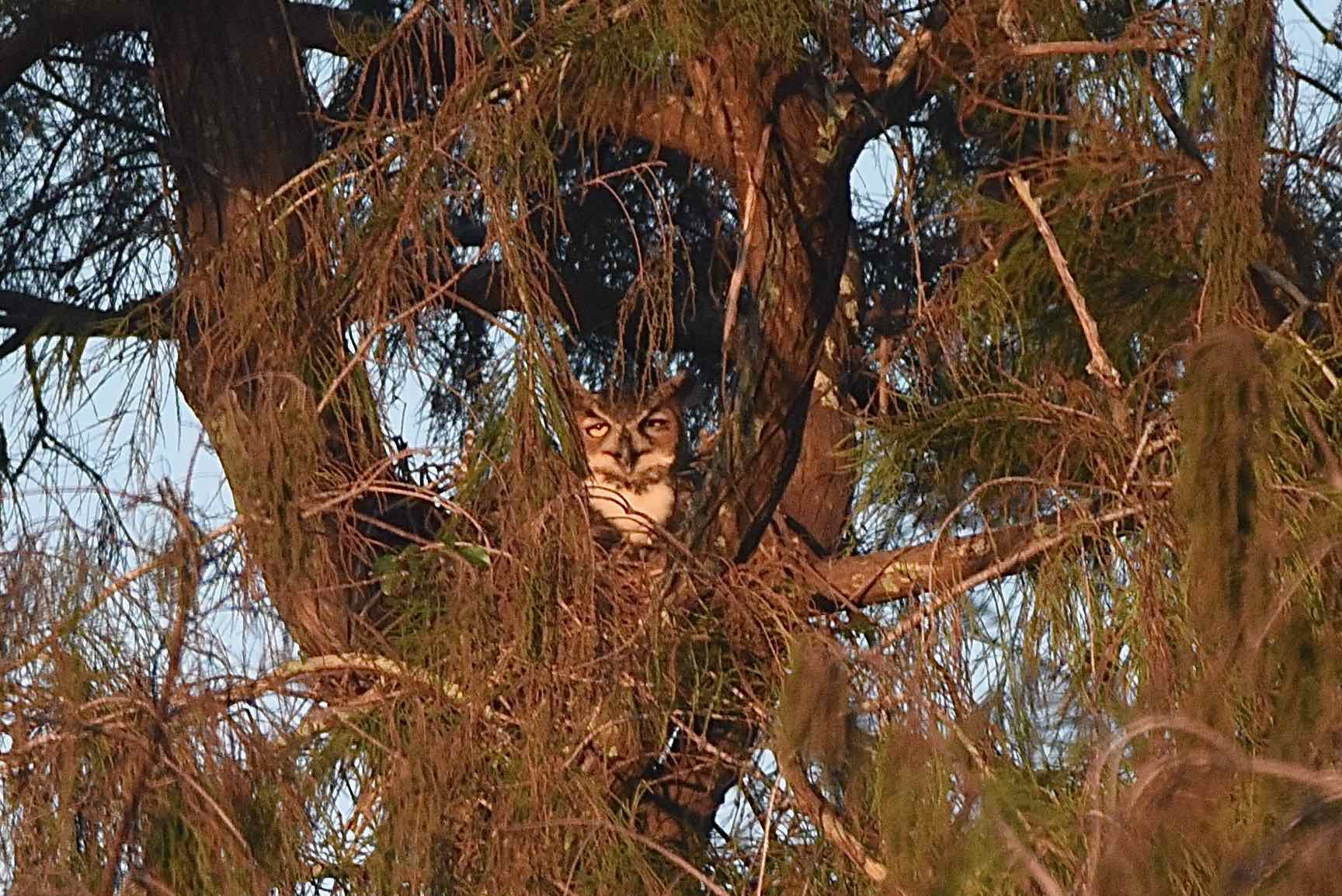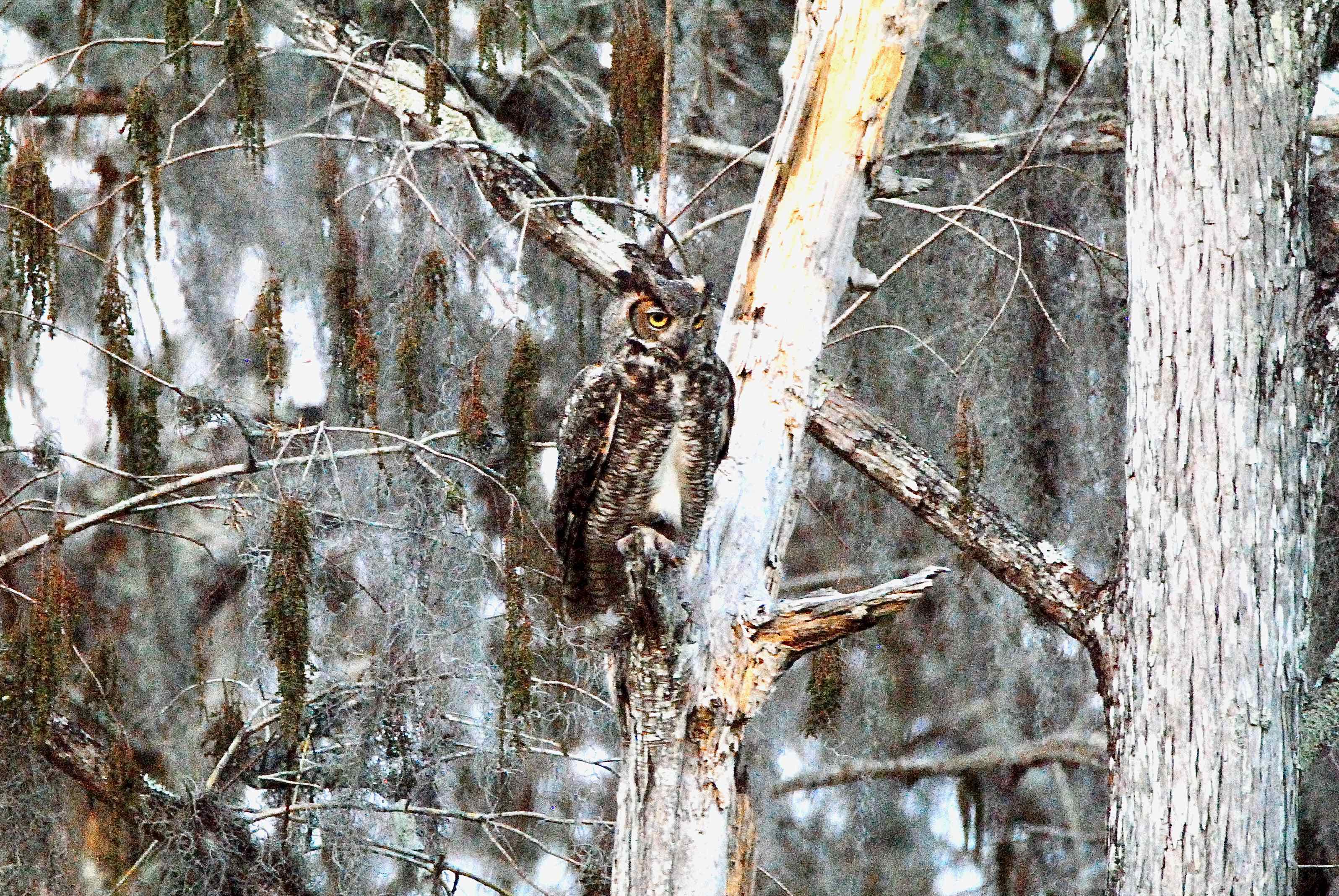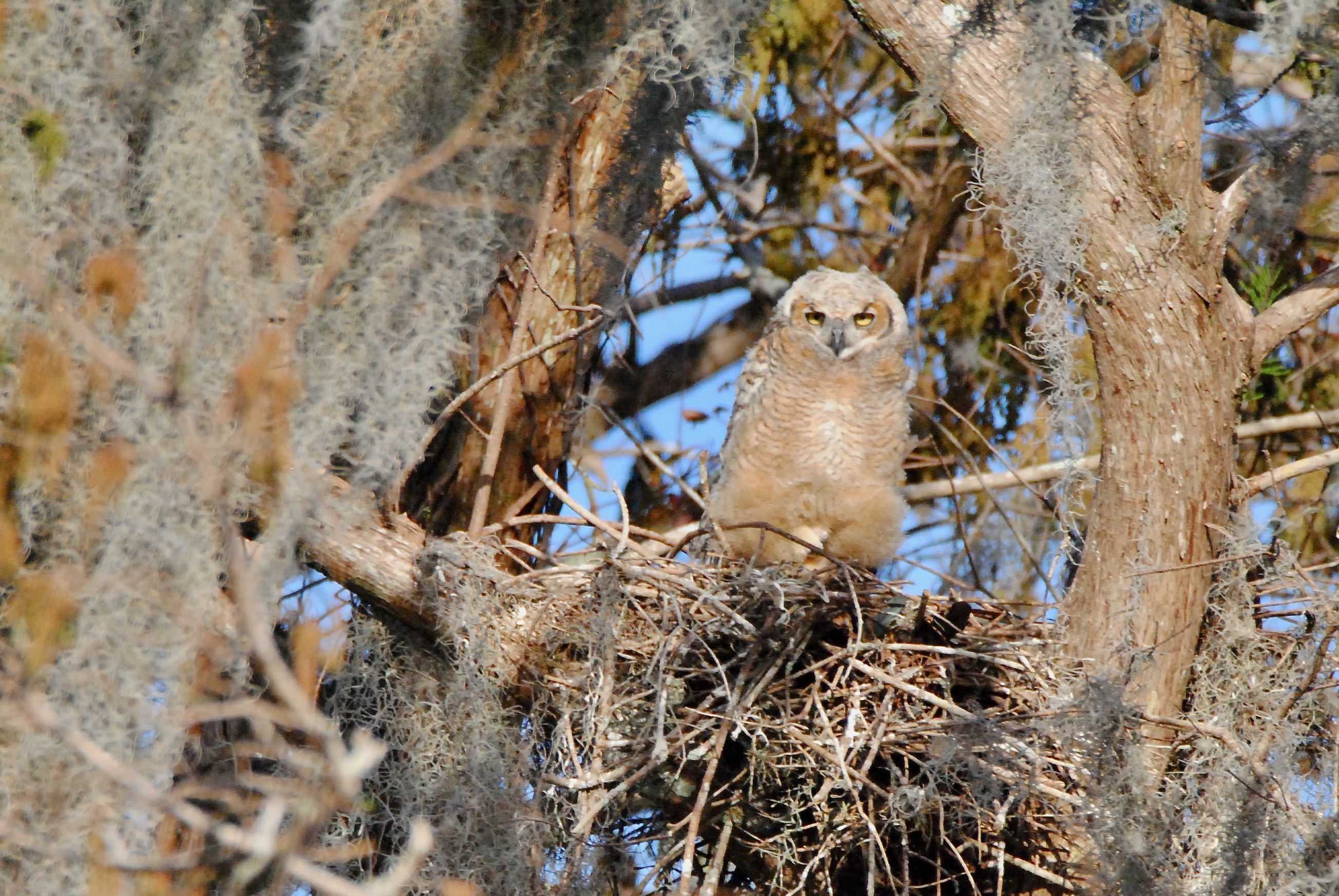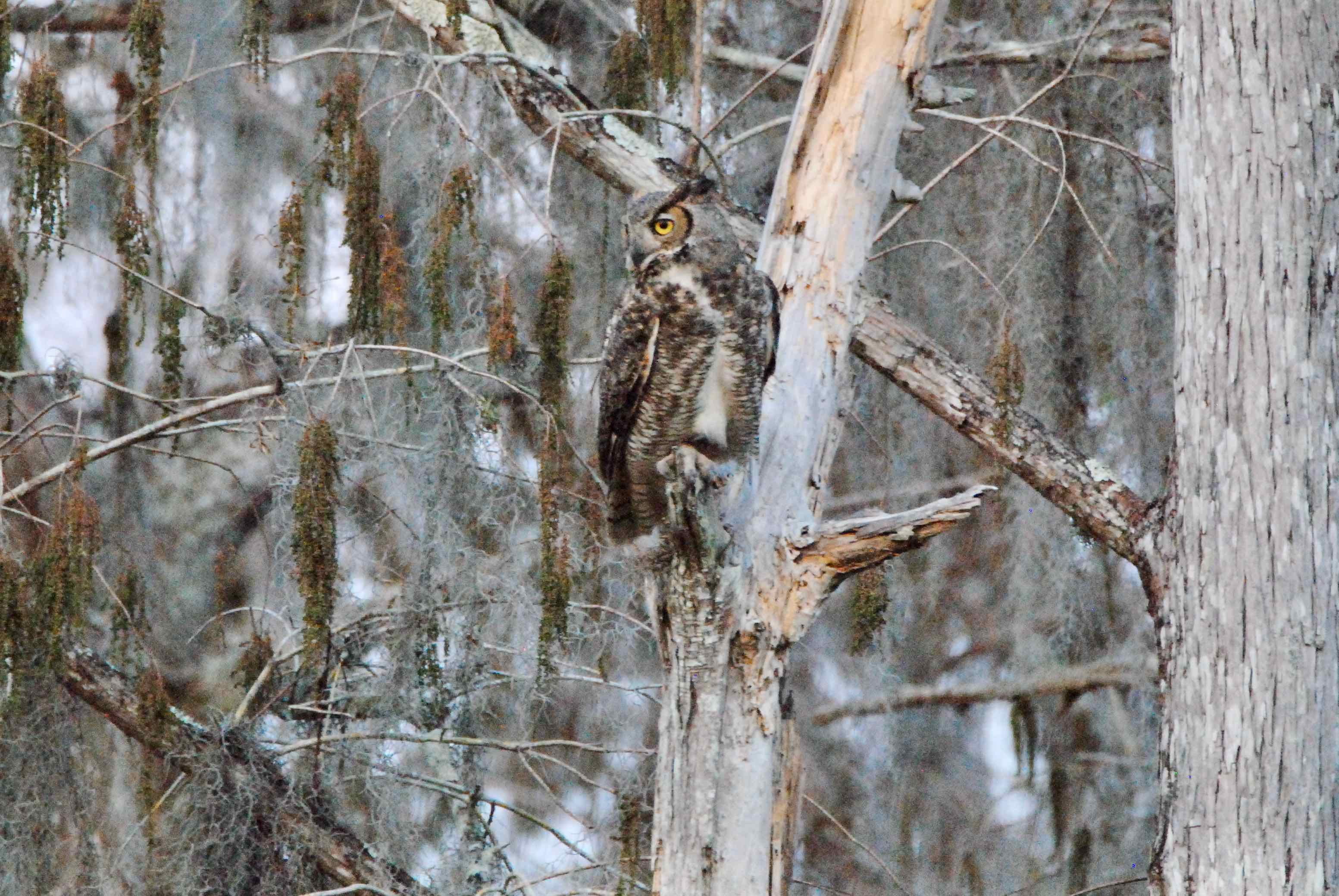
Great horned owl, photographed at Arthur R. Marshall Loxahatchee National Wildlife Refuge, Boynton Beach, Palm Beach County, in March 2016.
Fear those eyes piercing the night. They belong to a winged tiger.
The great horned owl, Bubo virginianus, is among the avian world's fiercest, most aggressive hunters, capable of taking down all but the largest prey. Hawks, skunks, cats, even other owls are all on their menu. They've been known to take on porcupines (not really a good idea). They're fierce enough to intimidate bald eagles. Really.
Despite the name, the features that most stand out on the great horned owl, aren't those angled tufts of facial feathers but rather those large yellow eyes with their massive pupils. This is a nocturnal creature and eyesight is critical. But those eyes are only one of the adaptions that makes the great horned owl a topline predator. Its head can rotate 180 degrees. It can hear the slightest sounds three football fields away thanks to specialized feathers that direct sound to its ears. Its wing feathers have a soft fringe that reduces the sound of air passing over them, and it can glide rather than flap its wings making its approach to its prey totally silent. The average bird or mouse doesn't stand a chance.
These are big birds, with a body that can exceed two feet and a wingspan that approaches five feet, yet compact enough to fly through thick woods. Their faces are marked by two angled tufts of feathers that resemble horns, giving the bird its common name. Great horned owls are streaks of browns and grays that can vary greatly in shade, depending on geography. Near the Arctic, they are pale, nearly white, darker to the south. They have a prominent reddish-brown face mask. They have large, incredibly strong talons.
Great horned owls are commonly found in almost all of North America, parts of the Caribbean, Central America and a good chunk of South America. You'll hear them at night, with their "hoot, hoot" call; you might catch a glimpse of one at dusk or early in the morning. They are one of the most adaptable animals on the planet. It's at home on the Arctic tundra, the swamps of South Florida, the deserts of the Southwest, the rain forests of South America, in deep woods, in cities, parks and the 'burbs.
Up north, breeding season begins in late winter. Here in South Florida, it begins as early as December. Courtship rituals include the male bringing food to his prospective mate. Great horned owls are capable of building their own nests but usually choose a used nest of a large bird such as a hawk. If the nest they want is occupied, they'll evict the owners. Even bald eagles, larger birds, will surrender their nest rather than risk a fight with a great horned owl. Females can lay as many as five eggs, but two or three are typical.
The eggs will take four or five weeks to hatch, with the female doing most of the sitting. Once hatched, both parents split the chore of feeding their offspring. At about five weeks, the chicks are capable of clambering out of the nest and onto adjoining branches; at nine or 10 weeks, they fledge. But the parents will continue to care for them for several more months.
The great horned owl population is secure, as rated by several agencies, but it has declined sharply over the last 50 years. It is a member of Strigidae, the family of true owls.
Arthur R. Marshall Loxahatchee National Wildlife Refuge



